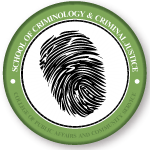Author ORCID Identifier
Huff - https://orcid.org/0000-0002-8123-1470
Helderop - https://orcid.org/0000-0003-0590-5258
Document Type
Article
Publication Date
11-1-2018
Publication Title
Applied Spatial Analysis and Policy
Volume
12
Issue
4
First Page
941
Last Page
963
Abstract
Prostitution has been a topic of study for decades, yet many questions remain about where prostitution occurs. Difficulty in identifying prostitution activity is often attributed to the hidden and seemingly victimless nature of the crime. Despite numerous challenges associated with policing street prostitution, these encounters become more difficult to identify when they take place indoors, especially in locations away from public view, such as hotels. The purpose of this paper is to develop a strategy for identifying hotel facilities and surrounding areas that may be experiencing elevated levels of prostitution activity using high-volume, user-generated data, namely hotel reviews written by guests and posted to Travelocity.com. A unique synthesis of methods including data mining, natural language processing, machine learning, and basic spatial analysis are combined to identify facilities that may require additional law enforcement resources and/or social/health service outreach. Prostitution hotspots are identified within the city of Phoenix, Arizona and policy implications are discussed.
Recommended Citation
Helderop, E., Huff, J., Morstatter, F. et al. Hidden in Plain Sight: A Machine Learning Approach for Detecting Prostitution Activity in Phoenix, Arizona. Applied Spatial Analysis 12(4), 941–963 (2019). https://doi.org/10.1007/s12061-018-9279-1


Comments
This version of the article has been accepted for publication, after peer review (when applicable) and is subject to Springer Nature’s AM terms of use, but is not the Version of Record and does not reflect post-acceptance improvements, or any corrections. The Version of Record is available online at: https://doi.org/10.1007/s12061-018-9279-1
Publisher holds a Bespoken License